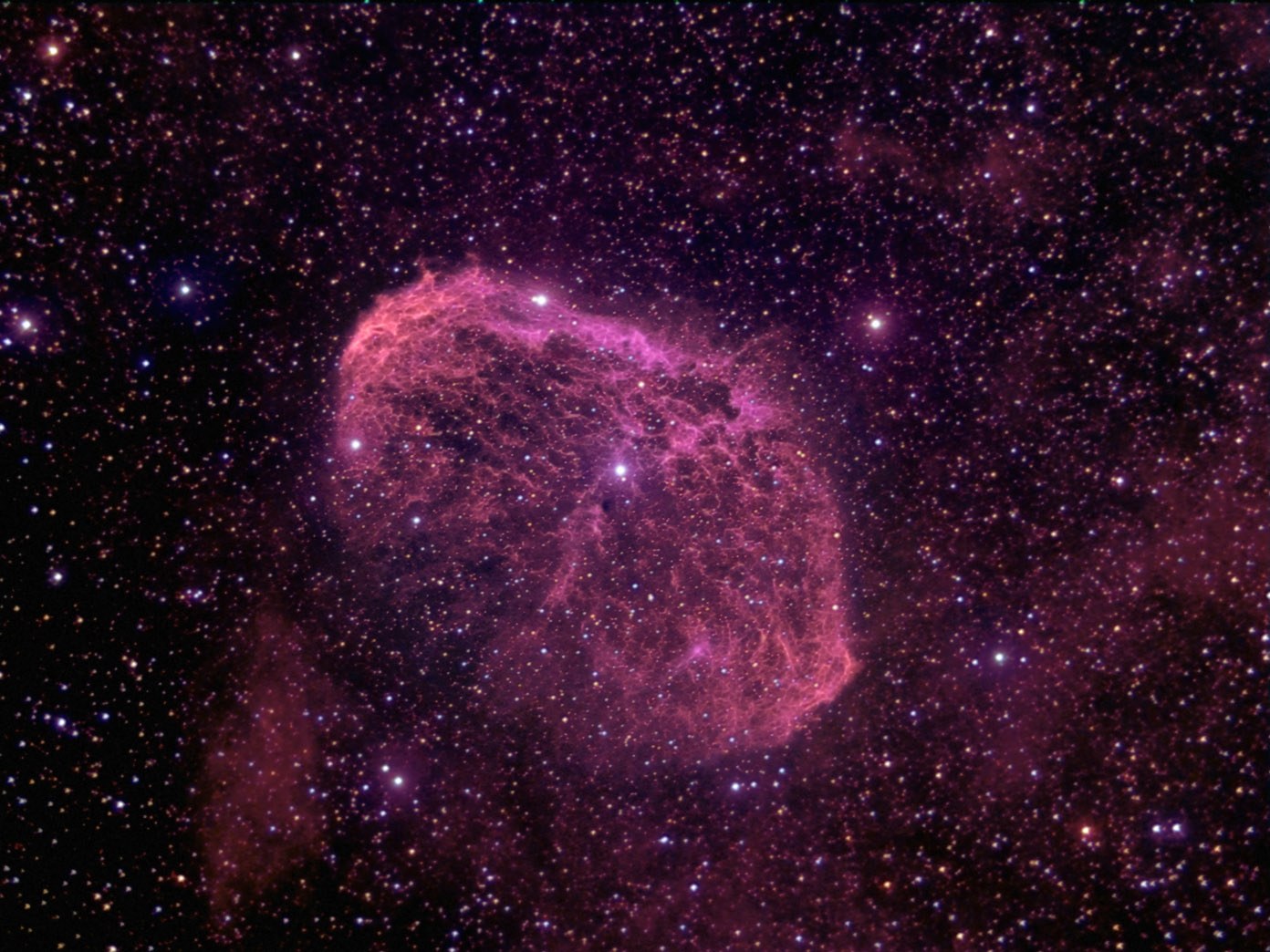CLICK ON IMAGE FOR FULL SIZE VIEW
Scope: C8 203mm at f/4.8, Location: Laguna Mountains, CA 8 September, 2007, Camera: Artemis285
Exposure: 8 x 8 min H-Alpha (1x1), 6 x 2 min IR/UV Block (1x1), 8 x 90 sec RGB Exposures (1x1).
Processing: Images were captured with Artemis Capture (as FITs). Aligned/stacked and dark subtracted in Astroart with Sigma Combine. H-Alpha and Color channels were scaled and color balanced in Astroart. Channels were co-registered in Astroart. Luminance construction consisted of the IR UV Block exposure with blend of the H-Alpha exposure. Curves and Levels applied in Photoshop to the Luminance construction to optimize object features. Final LRGB combine was done in Photoshop using Luminance Layering (or LLRGB). Color adjustment made to correct the color shift created by Luminance application. A light background noise filtering was applied with PixInsight LE SGBNR. Selective sharpening was applied to nebula features in Photoshop with a layer mask. Final Image size is approximately 1044x1392
North is up in this image. NGC 6888 is also popularly known as the crescent Nebula. It is an interesting structure since it was formed by a massive Wolf-Rayet star. The Wolf-Rayet is the bright star in the center of the object - it is theorized that it will ultimately go supernova. This field is located in the constellation of Cygnus. NGC 6888 is located about 4,700 light years distant from Earth. This image replaces an earlier image that can be seen in the Archives here . The Horizontal FOV is 32'.
Image center is located approximately - Equatorial 2000: RA: 20h 12m 06s Dec: +38°21'18"
